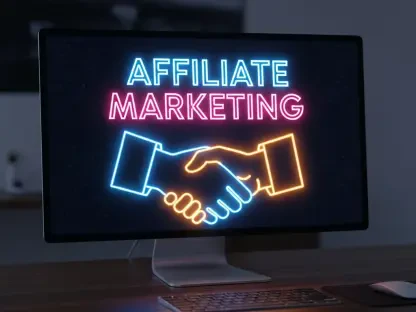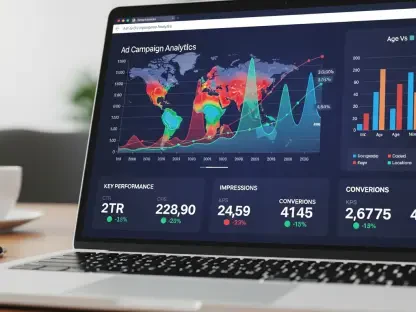Recent revelations have brought attention to significant security vulnerabilities within the Model Context Protocol (MCP), a critical framework in AI-driven marketing technology that could pose substantial threats to the integrity and safety of marketing platforms. Unveiled by renowned security researcher Akshay Pachaar, these vulnerabilities expose marketing frameworks to potential breaches, highlighting the urgent need for comprehensive security strategies and solutions. Why does this matter? As marketing technology increasingly integrates advanced AI capabilities, understanding and mitigating these vulnerabilities can influence the future landscape of digital marketing.
Overview and Features of Model Context Protocol (MCP)
The Model Context Protocol, developed by Anthropic, has emerged as a linchpin in AI-driven marketing technology, simplifying the integration of artificial intelligence applications with diverse external data sources via a client-server architecture. Serving as a standardized communication solution, MCP ensures efficient interactions between applications and Large Language Models (LLMs). By establishing uniform communication protocols, it enables seamless integration, which is essential for contemporary AI applications seeking to leverage large datasets effectively.
Standardized Communication Protocols
The MCP’s standardized communication protocols play a pivotal role in maintaining consistent performance, facilitating effective integration with LLMs. This seamless interaction is crucial for utilizing AI in real-time data analysis and decision-making, a key requirement in modern marketing technology landscapes. Standardizing these protocols ensures that the communication between various components remains efficient and effective, preventing confusion and errors during data exchanges.
Client-Server Architecture
Incorporating a robust client-server architecture, MCP operates on a simple yet efficient framework. This architecture is employed to manage communication between client applications and servers, enabling real-world applications in marketing platforms. The structured design of this architecture ensures that data flow is controlled and managed effectively, which is critical for maintaining the reliability and performance of AI-driven systems like marketing technology platforms.
Recent Developments and Industry Trends
There has been noteworthy progress in the implementation of MCP in recent times. Innovations such as improved protocol efficiency and security enhancements have marked significant advancements in its development. However, emerging trends point to changes in how MCP is perceived and integrated within the industry. As the protocol gains traction, shifts in industry practices influence its application, necessitating ongoing adaptation and innovation to address evolving demands.
Furthermore, organizations such as Google, AppsFlyer, and Microsoft have been at the forefront of adopting MCP, integrating it into their AI-driven platforms. Google’s initiatives, for instance, involve allowing third-party AI tools to directly interact with its advertising API, while AppsFlyer and Microsoft have incorporated MCP to enhance connectivity within their marketing tools and analytics platforms. These implementations illustrate MCP’s real-world relevance and impact on industry practices.
Vulnerabilities and Challenges
Significant vulnerabilities have surfaced, with security issues like tool poisoning attacks posing serious threats to MCP’s integrity. These attacks exploit weak points within the communication layer, executing unauthorized commands, leading to potential data breaches, or manipulating crucial advertising metrics. As a result, the vulnerabilities could potentially scale, affecting multiple platforms and vendors due to MCP’s universal applicability.
Addressing these vulnerabilities calls for robust security measures, including client-side defenses and enhanced context validation during data transfers. The need for authenticated mechanisms is critical, as many organizations deal with sensitive data, necessitating heightened scrutiny. Moreover, the industry must navigate regulatory and technical challenges, responsibly balancing the benefits of MCP against these inherent risks.
Promising Future for MCP
MCP’s future holds promise for ongoing development and breakthroughs, with advancements anticipated in security measures and innovations aimed at overcoming present vulnerabilities. The landscape of marketing technology stands on the brink of transformation, propelled by AI-driven automation and sophisticated data analysis tools enabled by MCP. The protocol’s continuous evolution will potentially shape long-term industry trends and redefine practices.
As MCP’s adoption continues to rise, the anticipated impacts on the industry include greater integration of AI technologies and enhanced marketing strategies. The focus on security and the development of comprehensive frameworks will contribute to MCP’s trajectory, setting the stage for further evolution in the realm of AI-influenced marketing technologies.
Strategic Path Forward
With the vulnerabilities exposed and the significance of MCP underscored, industry stakeholders must remain vigilant, prioritizing robust security strategies to preemptively mitigate identified threats. Collaboration among vendors to establish and maintain standardized security practices is critical, ensuring consistent protection across platforms. The security community plays a key role in advancing this goal, with targeted solutions to address MCP’s unique security needs.
The pathway toward future innovations involves balancing the immense potential of AI technologies alongside the essential security safeguards necessary to protect marketing operations from evolving threats. As the industry grapples with these reality checks, the lessons learned from current vulnerabilities pave the way for more secure applications of MCP, leading to a more resilient and adaptable technological landscape.









